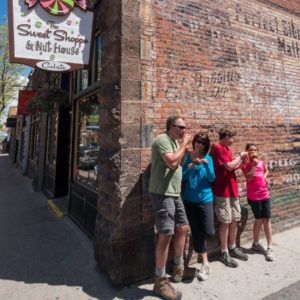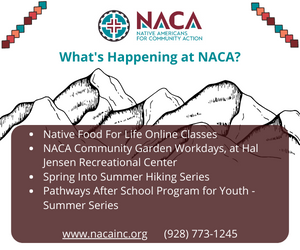 The Flagstaff Convention and Visitors Bureau is on a mission. A mission to increase the quality of life for every household in Flagstaff. Sound like a daunting task? Well, the effort needed to create this economic impact may not be easy, but the formula is simple: tourism = dollars. Dollars you don’t have to spend on services you enjoy such as city beautification, parks and recreation, arts and sciences and economic development. According to the Arizona Office of Tourism, approximately 42.1 million people visit Arizona every year, and collectively spend $21 billion. The money spent by visitors supports jobs and generates robust tax revenue. This money is especially concentrated in areas of the state that are more dependent on tourism. An estimated $3 billion in tax revenue equals an annual tax savings of $1,200 for every Arizona household and supports nearly 200,000 jobs.
The Flagstaff Convention and Visitors Bureau is on a mission. A mission to increase the quality of life for every household in Flagstaff. Sound like a daunting task? Well, the effort needed to create this economic impact may not be easy, but the formula is simple: tourism = dollars. Dollars you don’t have to spend on services you enjoy such as city beautification, parks and recreation, arts and sciences and economic development. According to the Arizona Office of Tourism, approximately 42.1 million people visit Arizona every year, and collectively spend $21 billion. The money spent by visitors supports jobs and generates robust tax revenue. This money is especially concentrated in areas of the state that are more dependent on tourism. An estimated $3 billion in tax revenue equals an annual tax savings of $1,200 for every Arizona household and supports nearly 200,000 jobs.
The direct economic impact of tourism is described above, but like other sectors of an economy, the dollars that are infused into the Flagstaff economy are redistributed and used by all residents in their everyday life: energy bills, shopping, dining out, child daycare, gas – and the list continues. Also, as with other economic sectors of an economy, the lifecycle of the visitor dollar is sustained and far-reaching, with benefits far beyond the tourism industry. An example of how this occurs would be: the visitor pays for their stay at a hotel; the hotel pays their front desk supervisor; the front desk supervisor buys groceries for the family; the grocery store pays their deli department supervisor; the deli department supervisor then pays their cable bill and the cycle continues. All local industries have a similar effect but the difference and the beauty of tourism dollars is that the visitor is not part of the local economy and has a much smaller footprint. They come and infuse our economy with dollars and then return home, utilizing minimal city services compared to a full-time resident. Plus, visitors do not compete for local jobs.
The mission to increase the quality of life for every household in Flagstaff continues for the CVB. With a visitor spend of nearly $700 million per year and growing, the Flagstaff Convention and Visitors Bureau, along with all of the businesses in Flagstaff that provide services and support for our visitors, are on a path to accomplishing the greater goal. Regardless of whether you work in the tourism industry or not, tourism revenue positively impacts the quality of your life by affording you and your family beautiful parks, public art, arts and sciences programing for students, economic stability for the community and real tax savings of $1,200 per household. FBN
Listicle side bar: What Can I Do to Enhance Tourism?
- Invite your friends and family to visit Flagstaff.
Not feeling like hosting the group in your home? We have a number of options, including
hotels, cabins, bed & breakfasts and even yurts!
- Whether at the grocery store or standing in the bank line, locals are frequently approached by tourists for information.
Take some time to share your experiences, encourage them to say an extra night to really experience the unique attractions Flagstaff offers. Steer them toward the Flagstaff Visitor Center or flagstaffarizona.org for additional information.
- Do you belong to an association or any kind of group?
Ask the organization to consider Flagstaff for their next conference.







